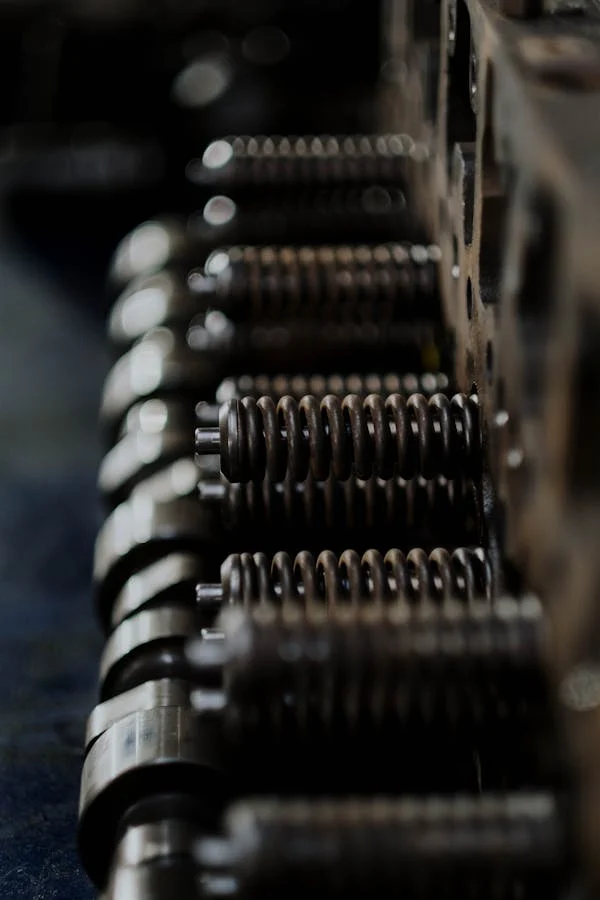
When it comes to designing vehicles that can handle rugged terrains or carry heavy loads, one term frequently surfaces: the Rigid Axle Suspension System. While modern cars are evolving with independent suspension systems, rigid axles still have a place in today’s automotive industry—especially in off-road vehicles, trucks, and some SUVs.
In this article, we’ll explain what a Rigid Axle Suspension System is, how it works, its advantages and disadvantages, and where you’re most likely to find it.
What is a Rigid Axle Suspension System?
A Rigid Axle Suspension System, also known as a solid axle or beam axle, is a type of suspension where both wheels on an axle are connected together by a single solid beam or housing. This means the movement of one wheel affects the other.
It’s a simple and durable design that has been used in automobiles for over a century and is still found in many commercial and off-road vehicles today.
How Does It Work?
In a rigid axle system, the wheels are mounted at each end of a solid beam. The entire axle moves as one unit when a bump or pothole is encountered. Leaf springs, coil springs, or air springs are typically used to absorb shocks and support the vehicle’s weight.
There are two main types:
- Live Axle: Transmits power to the wheels (common in rear-wheel-drive trucks).
- Dead Axle: Does not transmit power; mainly used to support the vehicle.
Advantages of Rigid Axle Suspension System
Despite being a more traditional setup, this system offers several clear benefits:
1. Strength and Durability
Rigid axles can endure high stress, making them perfect for vehicles that carry heavy loads or navigate harsh terrain.
2. Simple Construction
The straightforward design is easy to manufacture and repair. It also results in lower production and maintenance costs.
3. Better Load Distribution
The solid beam design ensures equal distribution of weight between both wheels, especially useful in commercial vehicles and trucks.
4. Improved Off-Road Performance
Rigid axles provide better articulation on uneven ground, making them ideal for 4x4s and off-road trucks.
Disadvantages of Rigid Axle Suspension
While tough and reliable, there are some downsides:
1. Reduced Comfort
Because the wheels move together, road imperfections are more noticeable in the cabin, resulting in a stiffer ride.
2. Poor Handling at High Speeds
Rigid axles don’t offer the same level of handling and cornering stability as independent suspension systems.
3. More Unsprung Weight
The design adds more weight to the unsprung part of the vehicle, which can reduce ride quality and tire contact on uneven surfaces.
Applications of Rigid Axle Suspension System
You’ll mostly find this system in:
- Pickup Trucks – for towing and hauling capacity.
- Commercial Trucks – for strength and stability under load.
- Off-Road Vehicles – such as Jeep Wrangler or Toyota Land Cruiser.
- Heavy-Duty SUVs – designed for rough terrain and reliability.
- Tractors and Military Vehicles – due to their extreme durability and simplicity.
Rigid Axle vs Independent Suspension
Let’s compare the Rigid Axle Suspension System with independent setups:
| Feature | Rigid Axle | Independent Suspension |
|---|---|---|
| Ride Comfort | Stiffer | Smoother |
| Handling | Basic | Superior |
| Load Capacity | High | Moderate |
| Maintenance | Easier | More Complex |
| Cost | Lower | Higher |
| Off-Road Performance | Excellent | Good to Fair |
So, while independent suspension systems are often better for comfort and handling, rigid axles still shine in heavy-duty and rugged conditions.
Maintenance Tips for Rigid Axle Systems
If your vehicle uses a Rigid Axle Suspension System, follow these maintenance tips:
- Regularly check for wear on bushings and leaf springs.
- Grease pivot points to reduce friction and noise.
- Inspect shock absorbers regularly for leaks or loss of damping.
- Keep the axle housing clean to avoid rust, especially if used in off-road or coastal areas.
The Future of Rigid Axles
While many passenger vehicles have moved away from rigid axles in favor of independent suspensions, there is still a strong case for their use in commercial and off-road segments. Manufacturers continue to improve their performance using modern materials and advanced engineering to reduce weight and improve articulation.
Conclusion
The Rigid Axle Suspension System is a classic example of “if it isn’t broken, don’t fix it.” Its strength, simplicity, and dependability keep it relevant in a market that demands performance, especially under tough conditions.
Whether you’re driving a powerful pickup, a heavy-duty truck, or an off-road warrior, a rigid axle system ensures that your vehicle can handle the load and terrain with confidence.









